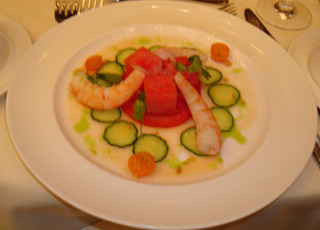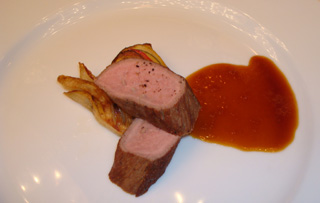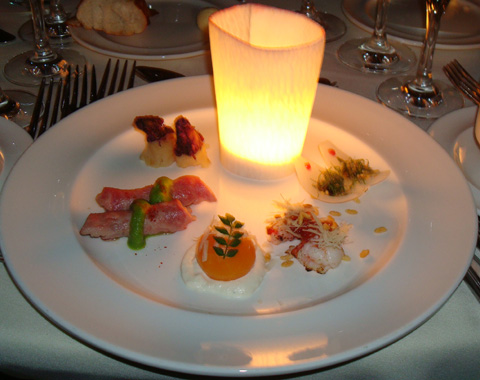The 100th Anniversary of Umami
You know sweet, sour, salty and bitter. But do you know umami?
You do if you’ve enjoyed tomatoes, Parmesan cheese, anchovies, mushrooms, cured ham, aged beef, and miso soup.
Those are just some of the ingredients or dishes that are high in umami, otherwise known as the “fifth flavor.” Often described as tasting “savory” or “delicious,” umami was discovered 100 years ago by Japanese scientist Dr. Kikunae Ikeda who studied the taste of kombu dashi (kelp soup stock).
Last week, chefs and scientists gathered in San Francisco for a one-day seminar on umami, followed by a four-course lunch spotlighting that savory flavor. The event was organized by the non-profit Umami Information Center (which is funded by various food companies) to mark the centennial anniversary of umami’s discovery.

Glutamate (glutamic acid), the most common amino acid we consume, is what produces umami. Although we tend to blanch when we hear the words “monosodium glutamate” (glutamate with salt), glutamate is a naturally occurring substance in many foods. “Chinese Restaurant Syndrome” (a supposed reaction to eating too much MSG-laced food) has been largely debunked, says Gary Beauchamp, director of the Monell Chemical Senses Center.
“The idea that glutamate could be poison is ludicrous,” he says. Indeed, human milk is much higher in glutamate than cow’s milk.
What glutamate does is make many things taste so much better by adding more complexity and mouth fullness.
But do chefs actually think about umami when composing a dish?
Hiro Sone, chef-owner of Terra in St. Helena and Ame in San Francisco, grew up enjoying miso soup every morning in his native Japan. Because of that, he says, umami is always a key factor in his cooking.
“I play guitar,” he explains. “You have to tune it before you play. Using umami is like tuning a dish. If you don’t tune in music, you won’t have a good tone. If you don’t have umami, you won’t have a good taste.”
 Thomas Keller of the French Laundry in Yountville, on the other hand, doesn’t consciously think about umami. “It’s not at the forefront of our minds,” he says. “Did whoever made ratatouille for the first time think of umami? No. It’s the same for us. When we create a dish, we think of the flavor components that are traditional or logical instead. But the knowledge of umami is extraordinarily important to understand how it impacts flavor.”
Thomas Keller of the French Laundry in Yountville, on the other hand, doesn’t consciously think about umami. “It’s not at the forefront of our minds,” he says. “Did whoever made ratatouille for the first time think of umami? No. It’s the same for us. When we create a dish, we think of the flavor components that are traditional or logical instead. But the knowledge of umami is extraordinarily important to understand how it impacts flavor.”
And just how does umami fare with wine?
Master of Wine Tim Hanni explains that the more umami in the food, the less enjoyable the wine you are drinking will be. Indeed, many hard-to-pair foods — asparagus, artichokes, cheeses — are high in umami.
Not to worry. That doesn’t mean you can’t ever imbibe while enjoying all those delicious foods. You can, but just employ the “tequila trick,” he says. Add some salt and acid (lemon or lime or vinegar) to the food, and you’ll get a better balance.


wow – Tim Hanni! I haven’t talked to Tim in years. I used to consult for Diageo’s wineries and I remember Tim very well. He was trying to progressive wine lists and an educational series that was so cool.
Only a real foodie would celebrate umami’s birthday!
Great article, very informative. I love that you had the courage to point out that MSG health concerns are largely unfounded. I imagine there are readers who will take offense.
Anyway, happy birthday to our old buddy, umami!!
Umami ….. ummmmmmmmmmm …. good stuff! 😉
Pingback: Food Gal » Blog Archive » The 100th Anniversary of Umami « Great Chefs